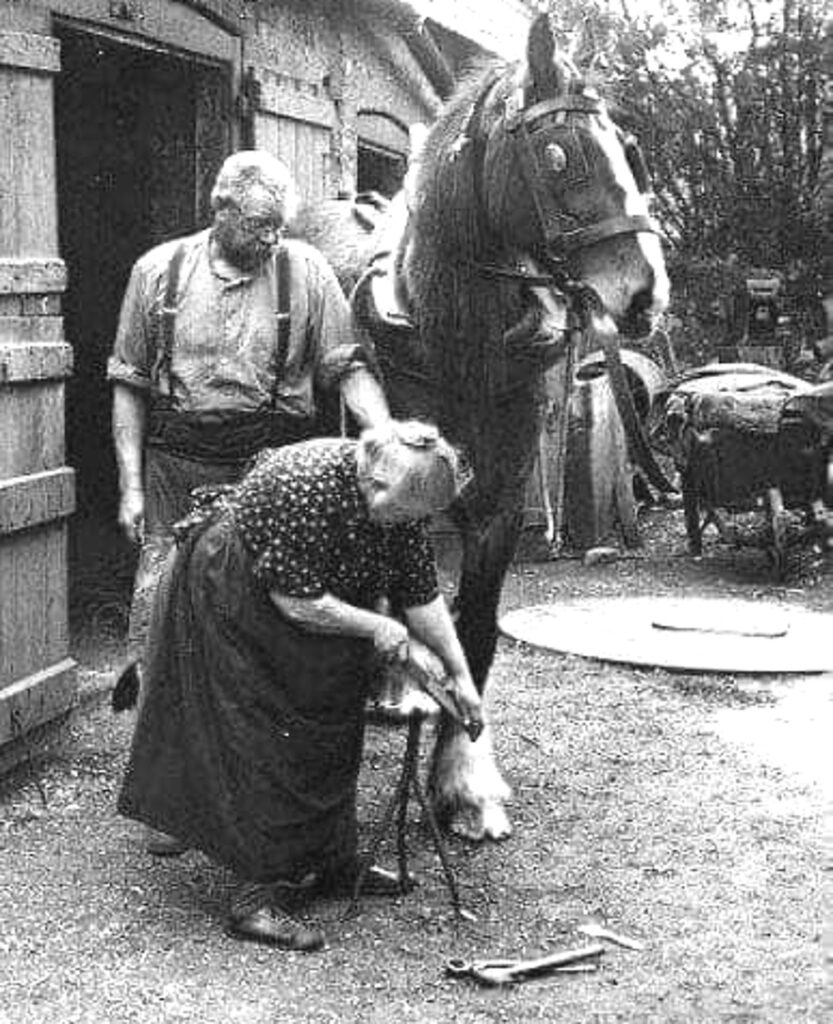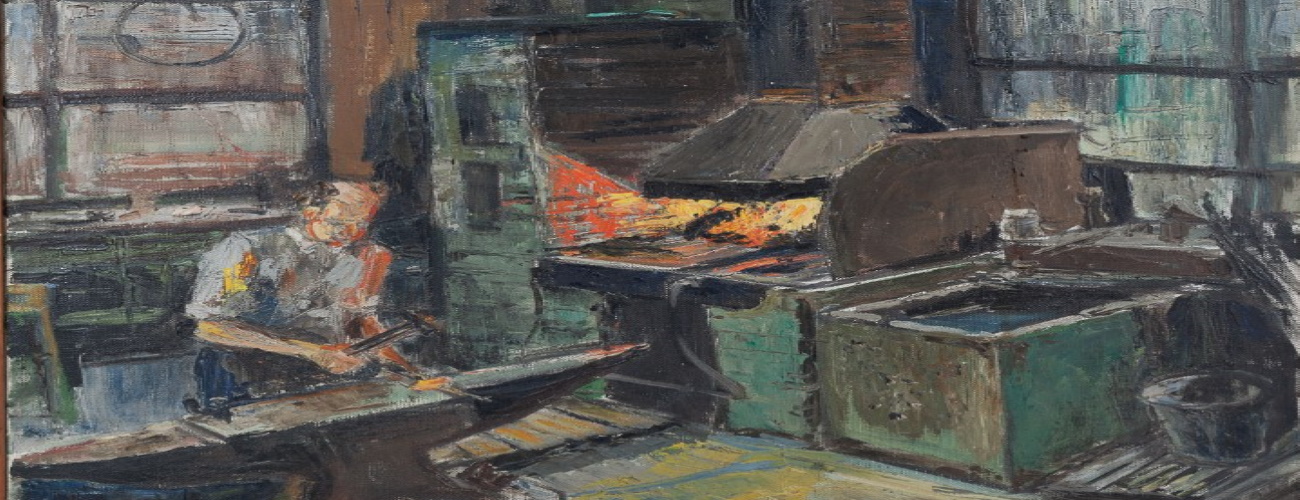The following is a transcription of some hand written notes taken down in July 1936 by Dr. F. W. Hardman of Walmer, a well known local historian who took a great interest in the history of the Parish of Nonington and was a leading member of the Kent Archaeological Society in whose archives the original document is held.
+++
Recollections of the life of the village of Nonington fifty years ago by Richard Jarvis Arnold who has the forge at Walmer
+++
Italics in the following are to provide additional information
and are not contained in the original account
+++

Richard and Elizabeth Jarvis at their 400 year old Walmer forge in 1938
+++
He was apprenticed at the Nonington forge in 1887 to Charles Morgan, proprietor of the forge and veterinary surgeon (who lived in what is now Church House, next to the church). There are many Morgan tombstones in the Church yard. (The Morgan family were blacksmiths and veterinary surgeons in the parish from the early nineteenth century until the 1920’s).
Three men and two apprentices were then employed there and there was a good deal of work from the farms of Nonington and the surrounding villages. The forge adjoined the Church yard as it still does.
He lodged in the Elizabethan cottage near the Church (now Church Cottage) which was then occupied by a gardener named Ellen (shown as living there on the 1859 tithe map, the paddock above the cottage being known as ‘Ellens acres’).
Harlow was the village carpenter and wheelwright, Harry Maxted was the bricklayer and Groombridge was the carrier to Canterbury and Dover.
He recalled the hard winter of 1890-91 when the plough stood still for seventeen weeks. [The average temperature in most of England and Wales between 25th November 1890 to 22nd January 1891 was 0 degrees Centigrade. In places the ground froze to a depth of 12 inches or more, and Kent experienced heavy snowfalls and strong winds}.
He remembered the old box pews in the Church which were removed when it was restored in 1887 by J. J. Wise of Deal.
The public houses were the Royal Oak (since rebuilt) kept by Woodruff and the Walnut Tree beerhouse kept by Sheaf (in Holt Street and closed in 1894. It is now called Walnut Cottage).
There were two windmills, a pug mill (seed mill, demolished about 1905) belonging to the Harvey family and a flour mill (which burnt down in the early 1960’s) worked by Dilnot. The Harveys had a malt house (built in 1704 and used until comparatively recently, it is the last building on the east side of the road at the Sandwich end of the village but is now a private residence).
He remembers the building of the present mansion house of St. Albans Court by William Oxenden Hammond and did some of the smiths work there. Adcock of Dover was the builder. When the foundations were got out some bones were dug up and these were reburied and a pyramid of stones erected over them (which is still there).
W. O. Hammond was a notable figure of very upright carriage. He was a bachelor, and the story went in the village that he had been crossed in love. He was fond of horses and kept a carriage horse and three hunters. These horses were all shot when they became old and buried in ‘the Ruins’ (the local name for the area between Beachams Lane and St Albans Court). A stone tablet in the new stable yard over the archway bore the words (as near as he can remember):
“What is it that carries me?”.
“My horse, my love, my horse”
[ This is a quotation from Shakespeare, first part of Henry IV, Act II, Scene 3, and actually runs:
Lady Percy “ What is it carries you away?”
Hotspur, “ Why, my horse, my love, my horse”.]
A part of the park was called ‘the Ruins’, here were the remains of old walls, and it was believed that there was an old chapel there. (Some of these walls were still high enough in the 1930’s for the ruins to be used as a pig sty. Ongoing excavations indicate there were a series of manor houses built on the site dating from the mid-13th to the late 16th centuries-see Essewelle/Beauchamps manor). Not far away is a road called Beachams Lane.
W. O. Hammond farmed his own land. When he built the new house he enlarged the Park by adding to it one of his adjoining farms. He was succeeded by his brother, Captain Egerton Hammond, husband of the present Mrs. Hammond (Mrs. Ina Hammond, who sold the estate in 1938, her son having been killed in the Great War there was no legitimate male heir to the estate).
The trees of Fredville Park were well known. In addition to the old oak (The Majesty Oak, still standing, see Essewelle/Fredville’s Notable Trees) there were some large chestnuts. One was called ‘the Step Tree’ and had some steps affixed to it. In the upper part of the trunk and branches 12 or 20 people could sit. (This tree also still stands but no longer has the steps that gave it its name).



